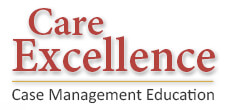New Tools Make Communication Easier, but Case Management Outreach Still Key
 For case managers, the key to helping patients adhere to their treatment plans is to make the process easy. According to the World Health Organization (WHO), a lack of doctor-patient communication is one of the biggest reasons patients are not compliant with their healthcare plan. Lack of compliance places a financial burden on society, ultimately increasing case management workload and healthcare costs.
For case managers, the key to helping patients adhere to their treatment plans is to make the process easy. According to the World Health Organization (WHO), a lack of doctor-patient communication is one of the biggest reasons patients are not compliant with their healthcare plan. Lack of compliance places a financial burden on society, ultimately increasing case management workload and healthcare costs.
One clinical study found that focusing on education and follow up with patients resulted in better compliance, and therefore better outcomes. Those who received careful education and were engaged with providers and case managers demonstrated a better understanding of their diagnosis and the recommended treatment.
How can case managers make engagement easier for the clients and patient they serve? One approach is by utilizing technology that’s already a part of their daily lives.
Technology
According to Pew Research Center, 95 percent of Americans now own a cellphone and those who own smartphones jumped from 35 percent in Pew’s first survey conducted in 2011, to 77 percent in their latest survey finished in early 2018. Cellphone ownership spans a wide demographic range and many now use their smartphone as the primary means of online access at home.

For these reasons the healthcare market is ripe for significant growth in digital technologies aimed at patient education and improved compliance and outcomes.
One New York-based physician has continued to gain efficiency since switching to an electronic health record system. His secret has been increasing patient engagement using technology. The first step toward increasing compliance is engaging patients in their healthcare.
Engagement Drives Patient Outcomes and Satisfaction
By using an electronic health record patient portal, the physician’s practice has reduced phone calls, streamlined workflows and decreased costs. The portal allows his patients to see clinical information, schedule appointments, pay bills, and request prescription refills. Part of that success came after the physician realized that to get patients to utilize the portal he needed to educate them.
Engagement is a significant factor to improve compliance with health care plans. Many technological engagement options are combining patient-facing tools, giving the patient navigation capabilities and education to support chronic disease management. While this technology is becoming more commonplace, successful use requires focus from case managers and a strategic plan about how or why patients would want to use it.
Greg Blew, vice president of product design and clinical effectiveness at Wolters Kluwer Health, made this observation at the 2019 Health Information Management Systems Society conference: “Technology developed without a plan in mind creates more negative impact than positives.” If the patient portal is left to collect dust, it becomes one more stumbling block to increase compliance.
Successful engagement requires patient education and a team attitude that “this is the way things are done.” A combination of engagement with increasing knowledge and education results in a patient more likely to listen to case management advice and recommendations.
Many of the current electronic health record software systems already include functionality with smartphone apps, so healthcare providers don’t need to invest in a secondary system to engage with patients. One study found 98 percent of patients felt comfortable communicating using online portals with their healthcare providers. As more are living their lives using digital tools, they expect this kind of convenience in their interaction with their healthcare providers.
Smartphones Can Reduce Cost of Medication Adherence
Poor compliance with medication is a common and costly problem. A study in the American Journal of Managed Care examines more than 857,000 patients treated for chronic conditions, who were undergoing more than 1.2 million different medication therapies. Those who followed their prescription schedule saved up to $5,340 annually, but those who did not incurred as much as $2,760 more in medical costs, representing an over $8,000 financial difference.

Another study found non-compliance with medications cost the U.S. healthcare system between $100 billion and $290 billion annually.
The key to increasing compliance with treatment plans is to make it easy for the patient. This has been the basis of technological advancements, using technology patients already use every day, such as smartphones, tablets and wearable devices.
One such advancement is a smart pill. These are tablets that contain tiny ingestible sensors detecting when a person has swallowed the medication and relaying the data via Bluetooth technology to a smartphone app shared with case managers, family, caregivers and the patient’s doctor. U.S. Food and Drug Administration (FDA) approved the device in 2015, but it is still in the early stages of implementation.
Some smartphone apps can sound an alarm when it’s time to take a medication, assisting patients who may not remember if they took a dose or not. Apps can also include medication profiles and allow patients to request refills, which helps improve medication adherence.
Care Managers Put it All Together
Research has shown, however, that automated reminders do not replace the benefits of personal communication to help patients understand why they need to take medication. Thus, integration of case manager education with technology-driven reminders and pharmaceutical databases may improve adherence.
Keeping healthcare information at a patient’s fingertips is the third pillar of compliance and key to education, reminders and communication. Many people already use their smartphone apps to interact with the outside world, get news and information and manage their financial accounts.
Smartphone technology can allow patients and families to consolidate pertinent health information and share it with their case manager to better manage care. Medication reminders are just a small step as apps can help patients keep track of medical tests and results, be linked to healthcare libraries and linked to fitness apps that monitor heart rate, count steps and track movement.
While technology is far from a cure-all, its potential as a tool for keeping patients informed and adhering to a care plan is enormous. This is the heart of case management.
REFERENCES
Eramo, L.A. (July 10, 2017) How to Improve Patient Engagement Through Technology. Medical Economics
Granger, B.B., Bosworth, H. (2013) Medication Adherence: Emerging Use of Technology. Current Opinions in Cardiology. 26(4):279
Kymes, S.M., Pierce, R.L., Girdish,C., Matlin, O.S. (2016) Association Among Change in Medical Costs, Level of Comorbidity, and Change in Adherence Behavior. The American Journal of Managed Care. 22(8)
Pew Research Center Internet and Technology (February 5, 2018) Mobile Fact Sheet
Rosenbaum, L., Shrank, W.H., (2013) Taking Our Medicine — Improving Adherence in the Accountability Era. New England Journal of Medicine. 369:694
Sopher, J. (2017) How Technology is Improving Medication Adherence. Rendia
Waggoner, D.M., Jackson, E.B., Kern, D.E. (1981) Physician Influence on Patient Compliance: A Clinical Trial. Annals of Emergency Medicine. 10(7):348
